Vermont Emergency Department Suicide Prevention Quality Improvement Initiative
YEAR 1
Project dates: January 2022 - December 2022
In January 2022, VPQHC began leading the Vermont Emergency Department Suicide Prevention Quality Improvement Initiative, which is supported through a public-private partnership. The purpose of the project is to drive monetary, educational, and networking resources to Vermont hospitals to support tailored initiatives focused on improving the quality of care for suicidal patients presenting to Emergency Departments.
To learn more about the Year 1 project, please click here.
YEAR 2
Project dates: May 2023 - June 2024
The second year of the suicide prevention initiative is focused on partnering with hospitals to ensure their suicide care pathways in the ED align with evidence-based best practice. This voluntary project will support hospitals with access to experts in suicide care, coaching, tools, onsite mock surveys, incentive payments, and educational stipends. Participating hospitals will meet to share information and collaborate, with the aim of improving care for patients experiencing suicidality.
Hospital Networking Meetings
SUICIDE CARE PATHWAY Resources
Essential Elements of the Suicide Care Pathway Guidance Document
This guidance document, developed by Dr. Edwin Boudreaux, PhD, outlines the essential elements of a suicide care pathway. Hospitals are encouraged to review this document, and use it while mapping the current state, and developing the future, ideal state, of their ED suicide care pathways.
“A typical pathway in acute care must include the outlined performance elements, including being specific about who (what role?) completes each component, when it is completed, and how it is documented. This presumes that a complete environmental safety assessment has already been completed, and treatment locations have already been designated as ligature resistant or not. Pathways may differ based on ligature resistant status and location of care (medical vs behavioral health area). When this is the case, the specifics associated with the care pathway should be clear. Care pathways should be informed by people with lived experience; should be flexible to allow patient-centered, compassionate care; and should enhance, not over-ride, clinician judgement. Alterations to the care pathway for an individual patient should be documented as part of care decision making.”
Suicide Care Pathway Examples
Guide for developing a suicide care pathway - Agency for Clinical Innovation - Refer to page 17/35
The University of Vermont Health Network (UVMHN) - Suicide Care Pathway Process Presentation & Overview - Andy Rosenfeld, MD
In the presentation below, Dr. Andy Rosenfeld provides an overview of The University of Vermont Health Network’s network-wide suicide care pathway development, and key insights and lessons learned from the development process. UVMHN has provided a pdf of its care pathway, which is linked above, for other hospitals to refer to, and use.
Process Flow Mapping Resources
Suicide Care Pathway Workflow Template (Word, modifiable): This is a modifiable template available for hospitals to use to support mapping the current, and future (ideal), state of their suicide care pathways.
Guide for Developing a Suicide Care Pathway - Agency for Clinical Innovation (2022)
Clinical Program Design & Implementation - How to Process Map - Health Care Improvement Scotland, Scottish Health Council
UVMHN - Jeffords Institute for Quality - Process Flow Mapping - Presentation by Jason Minor, MS, CHCQM, CLSSMBB, CMQ/OE, CPHQ, PMP
In the presentation below, Jason Minor, MS, CHCQM, CLSSMBB, CMQ/OE, CPHQ, CPPS, PMP, Network Director of Continuous Systems Improvement at the Jeffords Institute for Quality provides an orientation to process flow mapping. After completing the session, participants will be able to: identify the meaning and shapes within workflows, access workflow diagram templates & training materials, and complete a basic workflow diagram.
